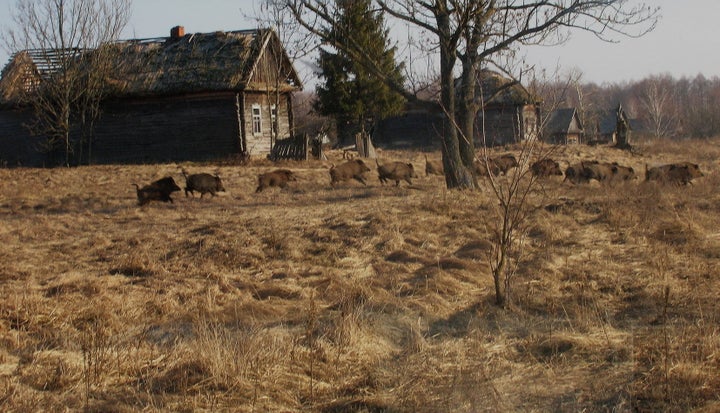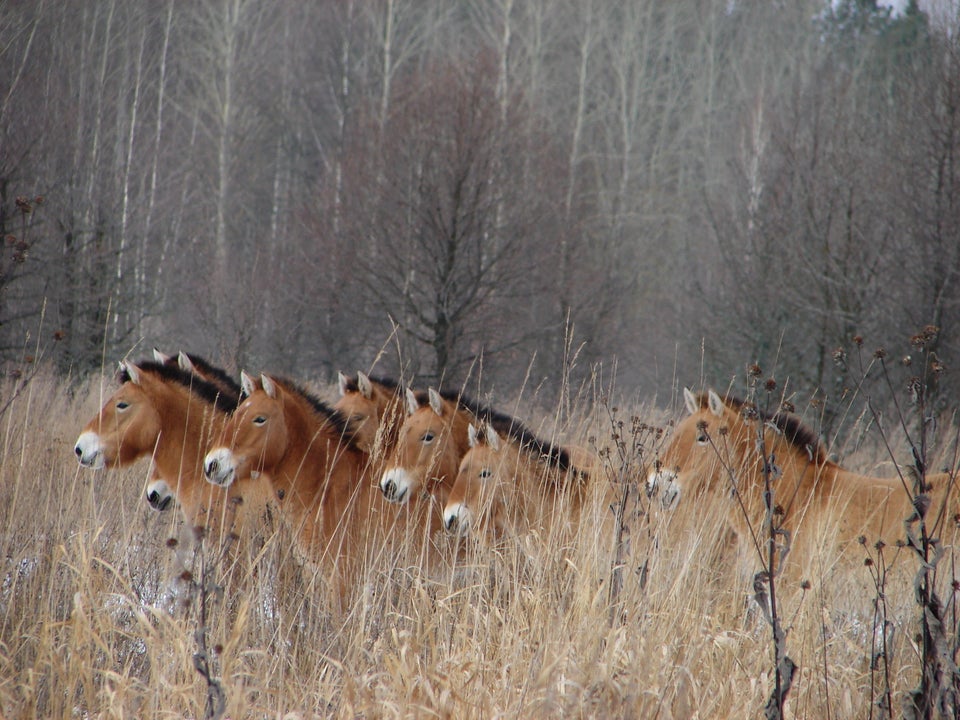
In a wide departure from the notion that Chernobyl's exclusion zone is an inhospitable, desolate tundra, researchers have found animal populations are actually thriving in the region, no longer burdened by humanity's impact.
The area has been uninhabited since the 1986 meltdown of the Chernobyl Nuclear Power Plant, which killed 31 people and forced all residents to evacuate from more than 1,000 square miles. But a new study published Monday in the journal Current Biology found flourishing numbers of large wildlife, including wolves, elk, foxes and wild boar, inside the Belarusian part of the exclusion zone.
"Within the exclusion zone there's evidence of wildlife everywhere," said James Beasley, a researcher at the Savannah River Ecology Laboratory and co-author of the study.
The findings come with some striking statistics. Wolf populations in the area are seven times higher than they were before the accident. Populations of hoofed animals are on par with those seen in protected reserves in Belarus. And Jim Smith, co-author and professor at the University of Portsmouth, said small animals are likely doing even better, as they breed faster than larger mammals.
This resurgence is likely linked to the removal of human sprawl, hunting and the general strain urbanization puts on natural ecology.
"When you take the humans out of the equation, the wildlife rebounds," Smith said. "It [reflects] quite profoundly the impact ordinary human activity does to an ecosystem."
While animal populations may be doing well, the study's authors say their research didn't look at the individual health of animals, which has almost certainly been impacted in some way by the potent fallout. Scientists have long observed the toll of radiation on certain species, including deformed beaks in birds, a decline in the number of spiders and an uptick in tumors in some animals, according to a report last year by The New York Times.
But those effects are mostly concentrated in so-called "hot zones," regions where radiation is still found at high levels. Other areas in the exclusion zone are relatively clean of the fallout, enough so that disaster tourism has spiked in recent years.
"We're not looking at the health of individuals, we're looking at the health of populations," Smith said. "We're in this kind of different radiation regime ... and what we're saying is we're pretty confident the wildlife now is doing better than it was before the accident."
The Guardian does note that some have called the findings into question, arguing that animal populations are doing well across Europe as a whole. But within Chernobyl, animals are alive and breeding.
"Our data suggests that there are very healthy populations there," Beasley said. "Wildlife is abundantly everywhere."
Also on HuffPost:

